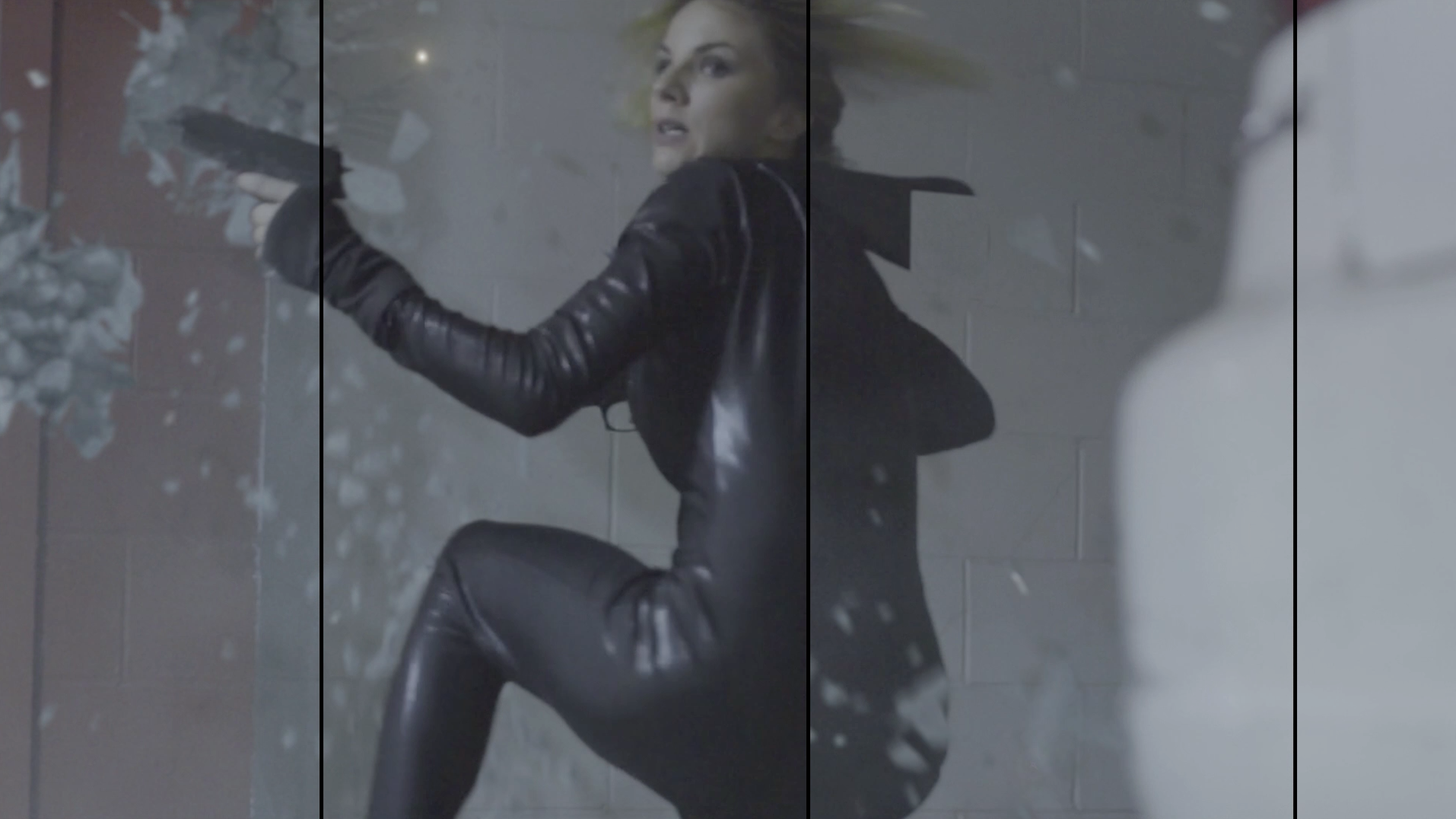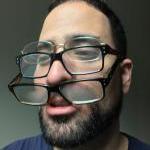-
Posts
60 -
Joined
-
Last visited
Content Type
Profiles
Forums
Articles
Everything posted by tonydtv
-
The macro lens (I assume a single element diopter and not an achromat?) is too strong to get infinity focus. The strength of the diopter moves where infinity focus is. A stronger diopter moves infinity back, a weaker one moves it forward. So right now, your diopter is so strong that for the wide angle adapter to attain infinity, it would have to go behind the diopter, aka, impossible. If you choose a weaker one, infinity will move forward, ideally in front of your diopter where your wide angle adapter can go without breaking the known laws of physics. Here's a little diagram to illustrate: I suggest buying a cheapo set of close-up filters/macro filters/diopters that come in +1, +2, +4, +5 sets. While they won't be sharp, you can fine tune infinity focus, and they'll let you know what strength achromat you should buy if you're so inclined. Also, your image is fuzzy because of the quality of the macro/diopter lens; it's probably a single element diopter. An achromat (a two element diopter) will make your image much much sharper. It may also be your wide angle adapter; is it multi-element? Or you could stop down the lens, but where's the fun in that?
-
Diagrams of the three builds, so far:
-
Oh alright, here's some stills of four 0.6x wide angle adapters stacked against a +13 diopter block (+10 achromat and a +3 achromat) on the 43-86mm nikkor, set to 86mm. Its equivalent to a 30mm anamorphic lens. Blue is 2.40:1 crop, so vignetting is not an issue going this wide. Top is a bit soft, but I imagine that's due to the achromats: I have them out of their housings and stacked glass on glass, and with the curved surfaces they don't align all that well by hand. Also, very heavy, very awkward in my current tape and PVC build. Working on that.
-
More fun footage. Didn't do the 3x or 4x of the wides, mainly because of the logistics of safely mounting that much weight to the front of the lens. So here's a build with a different taking lens (43-86mm nikkor, fixed at 86), a different anamorphic adapter (Bell & Howell single focus anamorphic w/ focusing diopters removed [dat flare tho]), and a better PVC housing. Sorta. Actually, the first few clips were before I got the pvc snug, so its free-lensy. Majority of close focus shots were between 1 and 5 feet. The super close shot of the pup at 1:25 was inches away. As requested, pic of the build: The anamorphic adapter is held on by tape, not the strongest connection. Had to cradle the anamorphic block and the taking lens in the same hand just in case they came apart. Even with my other hand handling the wide angle block, I didn't want to risk the stress more glass would've put on the build, so I held off on the additional wide angle adapters. Next time!
-
So where does the focus take place?
-
Awesome! So when you move the wide further away, does it focus closer or further?
-
Just found adding a third 0.6x wide angle adapter (and not changing the + 10 achromat) actually acts as a 0.6x wide angle! And adding a fourth 0.6x makes the whole block a 0.4x-ish wide angle! There are vignetting issues, and the travel is increased, but it looks promising enough to expect a 35mm equivalent anamorphic from it, if not a 28mm too. Also, it's heavy. Very heavy. Footy soon.
-
Then again, if the optics are good, it could work for the smaller anamorphics. I currently have my +10 mounted on my Bell and Howell (the single focus kind, but with the diopters removed), and the smaller opteka may be a smarter fit, ergonomically.
-
Not sure I follow your plan. Would this enable single focusing or would you still have to double focus?
-
Yeah, I know opteka makes them too, but allegedly they are 40mm diameter glass mounted into a frame to fit filter sizes (72mm, 77mm, etc). Probably get vignetting on a 55mm, but maybe fine on an 85mm. There's always edmundoptics.com....
-
That is EXACTLY what I used in my build for the second video! Now having bought that ridiculous spinning disk contraption for my XL1 doesn't feel so stupid...
-
Thanks! Any of those achromatic diopters work great. The tough part for me has been finding good wide angle adapters. The ones built for certain cameras tend to go soft on the edges or develop mean CA that you have to stop down for. I imagine that's because they are designed for one specific lens. The more generic, focus through adapters have worked best in my experience...
-
samples now: +10 achromat and two 0.6x wide angle adapters = much shorter travel between achromat and wide angle block = less vignetting, less breathing (but still there) + keeping infinity focus intact. All the shots close focus to between 1 to 5 feet. Also built a wonky PVC housing, so while the elements are aligned better, they're still a little off.
-
Thanks artiswar! Look forward to hearing what you make! Also, a little more tinkering fun: by doubling the strength of both the achromat and the wide angle adapter, you shorten the length of travel between the two elements to focus. Less vignetting, more close up, keep infinity. Rock and roll. Samples soons.
-
Might as well throw this into the anamorphic forum explosion! I came across this focusing solution earlier this year by taking my 20% understanding of comments made on varied forums about optics and vaguely knowledgeably combining elements from the large amount of random glass I've amassed over the years. I don't claim to know much about optics, and I'm certainly no engineer, but this technique has worked when I didn't have the budget to rent a set of Kowas or the like. This is definitely a lo-fi, DIY solution. The other products popping up around the forum are higher quality than this, and really this solution's quality depends on the quality of glass you use. Also, I could be totally wrong about how and why this is working. But if you like to tinker as much as I do, and don't mind a lo-fi aesthetic, then, here: (handheld the optics, hence the wobbles) In a nutshell, arrange the following items in the following order: a. Camera b. Taking Lens c. Anamorphic Adapter d. Achromat e. Wide Angle Adapter Instructions: 1. Mount camera, taking lens and anamorphic adapter together. 2. Attach achromat to the front of the anamorphic adapter, as close to the glass as possible. 3. Place the wide angle adapter as close to the achromat as possible. 4. Through your viewfinder (and not lens markings) set infinity focus. 5. Move the wide angle adapter away for close focus. At some point you'll start to vignette from the front element getting to far away. If you want closer focus, reset your 'infinity focus' to something closer, like 15ft. That's what I did in the embedded video. There's more notes in the video description, but here's a couple more to get you started: The trickiest part is finding the relationship between strength of the achromat to the strength of the wide angle adapter. I'm sure someone with knowledge of optics will say how. Loudly. Before dropping cash on any achromat, you can use closeup filters to ballpark a strength. In fact, you can use closeup filters, but image quality will suffer. But good if you want to experiment. Also, old DVX or HVX wide angle adapters are a good starter to tinker. 72mm or higher gives you more travel before vignetting. Any questions, ask away!
-
My understanding is that lens coatings are there to increase light transmission and reduce light reflection (or is it refraction?). Still haven't done this yet, got sidetracked with another lens experiment, hope to try this out in the next month or so.
-
Bought some Jeweler's Rouge and synthetic oil to try out. It is a finer grit than Brasso, so let's see what happens!
-
I was curious if anyone has tried this. I've got an Isco projection lens, and while I love the sharpness, it doesn't really flare. Would removing the coating reduce the flare suppression? So far I've searched other forums and found people saying toothpaste or Brasso works as a mild abrasive, and after hours of polishing you can strip off the protective coating. Anyone try something similar?
-
The optics to compensate for barreling are pretty complex and need to be designed around a specific lens. Unless you buy a true anamorphic prime, barreling is going to happen if you're using anamorphic projection lenses, especially the 2x lenses. (The Iscoramas are a 1.5 squeeze so the field of view isn't as wide as 2x, so you get less barreling, up to a point.) dhessel is right, you can use optic compensation to reduce it, but personally, I love that barreling...
-
Looking for anyone in the US looking to sell a Lomo NAP 2-2 projection lens, or if anyone in the Los Angeles area has one for rent. If so, let me know!
-
The stretch factor changes with your focus. If I remember it right, the stretch factor they put on the lens is for infinity focus.
-
Also check out this thread for more isco info: '?do=embed' frameborder='0' data-embedContent>>
-
There is a thin glue on the threads joining the anamorphic front to the 85mm projector lens. It's pretty easy to free up, just GENTLY tap the area where the two lenses meet to break it up. Should unscrew pretty easily. Just don't tap it too hard, you could break some glass internally. If not, ken's method works well too.
-
Interesting. I bought a junked Bell and Howell anamorphic adapter a while back, took it apart and it seemed to be the same setup if I remember correctly. I'll have to dig that one up again.
-
Is that what Isco has patented? Seems like a very simple optic setup...



